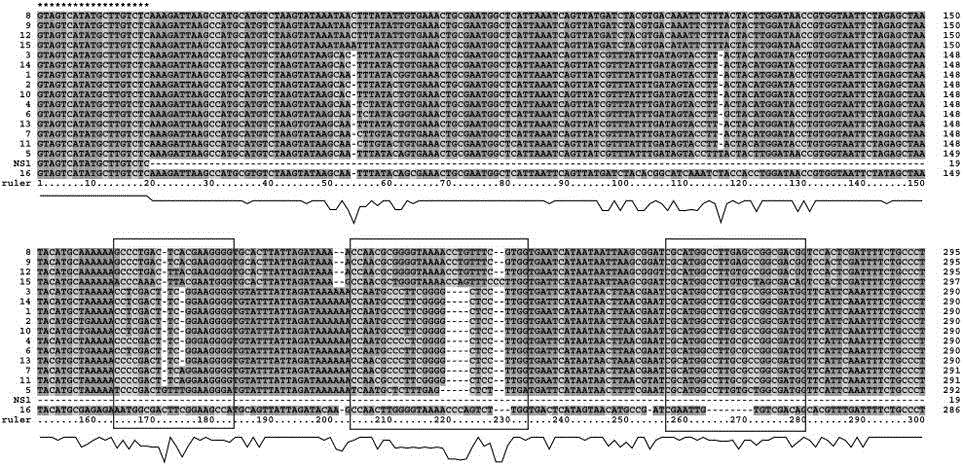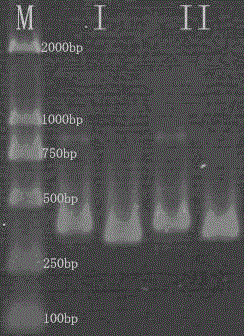DGGE/TGGE (Denaturing Gradient Gel Electrophoresis/Temperature Gradient Gel Electrophoresis) analysis method of specific 18S rDNA (Deoxyribose Nucleic Acid) fragment without being based on GC clamp strategy
An analysis method and fragment technology, applied in microorganism-based methods, microorganism determination/inspection, biochemical equipment and methods, etc., can solve the problems of high cost, low GC long primer amplification efficiency, etc., and reduce experimental operation steps. , the effect of saving experimental costs
- Summary
- Abstract
- Description
- Claims
- Application Information
AI Technical Summary
Problems solved by technology
Method used
Image
Examples
Embodiment 1
[0047] Example 1: In this example, red yeast rice purchased in Yongchun area and Youxi area was taken as the research object, and the amplified fragments of the primer pair NS1-fung and NS1-GCfung (the sequences of primers NS1, fung, and GCfung are detailed in the sequence list) were used for DGGE Used to analyze the fungal flora in distiller's yeast.
[0048] The specific steps of this embodiment are as follows:
[0049] 1. Genomic DNA extraction
[0050] Refer to literature (Heng Zhu, Feng Qu and Li-Huang Zhu. Isolation of genomic DNAs from plants, fungi and bacteria using benzyl chloride. Nucleic Acids Research. 1993,21(2):5279-5280.) Extraction by benzyl chloride method Total genomic DNA of microorganisms in koji.
[0051] 2. Amplification of specific 18S rDNA fragments
[0052] Using the genomic DNA extracted in step 1 as a template, the primer pair NS1-fung and the primer pair NS1-GCfung were used to amplify specific 18S rDNA fragments respectively. The PCR conditio...
PUM
 Login to View More
Login to View More Abstract
Description
Claims
Application Information
 Login to View More
Login to View More - R&D
- Intellectual Property
- Life Sciences
- Materials
- Tech Scout
- Unparalleled Data Quality
- Higher Quality Content
- 60% Fewer Hallucinations
Browse by: Latest US Patents, China's latest patents, Technical Efficacy Thesaurus, Application Domain, Technology Topic, Popular Technical Reports.
© 2025 PatSnap. All rights reserved.Legal|Privacy policy|Modern Slavery Act Transparency Statement|Sitemap|About US| Contact US: help@patsnap.com



